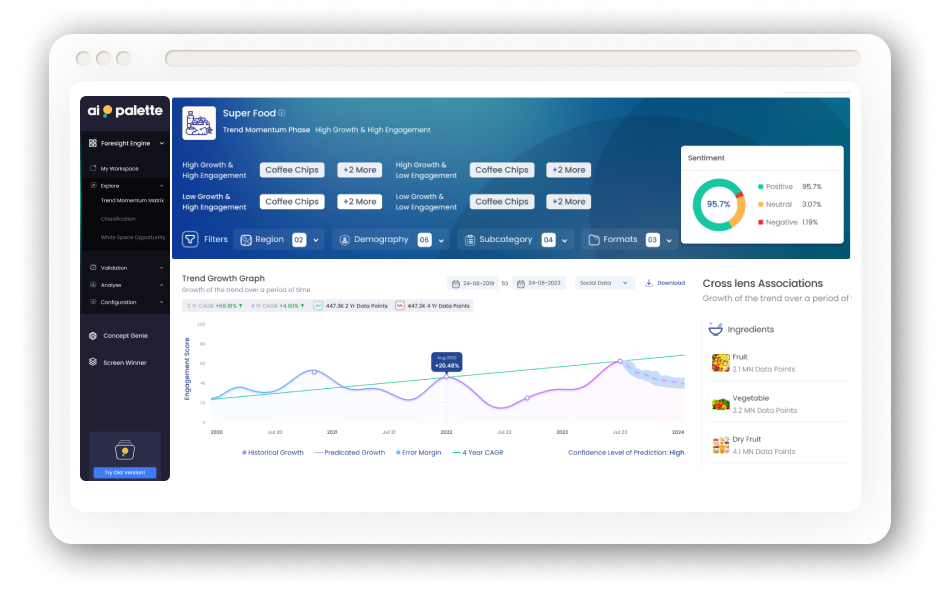Objective:
During 2020’s economic downturn, Kellogg’s Southeast Asia faced an evolving marketplace that directly impacted their core products. Amidst global challenges and shifting consumer behaviors, the team had to swiftly realign their product and marketing strategies, pushing them to innovate and maintain their market foothold in an increasingly uncertain landscape.
Challenge:
For decades, Kellogg’s was synonymous with morning breakfast routines. However, the pandemic disrupted these habits, blurring traditional meal timings as remote work and flexible schedules took hold. With consumers redefining their eating habits, Kellogg’s faced the dual challenge and opportunity of understanding and adapting to these shifts. To succeed in this new landscape, they needed to decode the intricate changes in post-pandemic consumption patterns and recalibrate their market positioning accordingly.
Solution:
To capture these detailed insights, Kellogg’s partnered with Ai Palette and its state-of-the-art analytical platform. Launching a robust trendspotting initiative, the team embarked on an exhaustive exploration across four key markets: Malaysia, Philippines, Singapore, and Thailand, analyzing content in five distinct languages. They sifted through a staggering 485 million data points from diverse digital terrains like social media platforms, influential online recipe sites, and niche forums. This deep dive revealed the evolving culinary preferences of consumers, largely dictated by the confinements of the pandemic.
From this vast repository of information, Kellogg’s was able to pinpoint the top 50 trending recipes specific to each nation. Of particular interest were the innovative recipes that seamlessly blended traditional ingredients with cereal, showcasing the adaptability and relevance of Kellogg’s products in changing times.
Outcome:
Empowered by these detailed insights, Kellogg’s crafted a meticulously thought-out marketing campaign that showcased the adaptability of cereals in various recipes, breaking the conventional mold of just breakfast consumption. This tactical shift was more than just a product push; it aligned seamlessly with the evolving tastes and behaviors of consumers. By spotlighting cereals in unique, unexpected culinary contexts, Kellogg’s reinvigorated and expanded its audience’s palate. The results spoke volumes: a staggering 2x increase in buyer intent and a robust position for Kellogg’s as a market leader, even amidst the daunting economic challenges of the period.




















